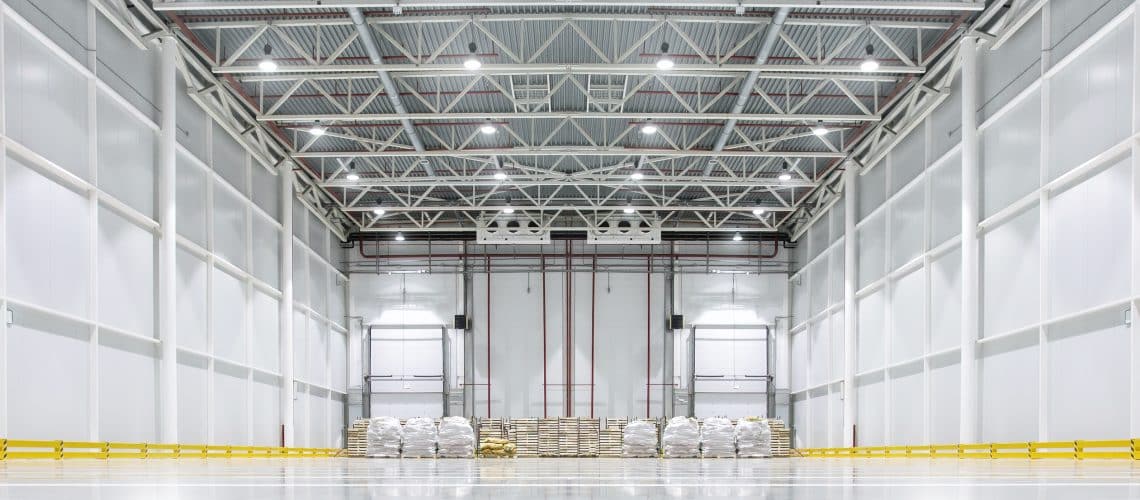The Rise in Demand for Cold Storage and Its Impact on the Food Retail Industry

For many years, cold storage has been the pillar of many industries, such as food retail and pharmaceutical, to maintain the integrity of temperature-sensitive products. It has been a key tool to keep the cold supply chain intact and help cool products in large volumes efficiently and effectively.
Today, cold storage facilities are indispensable in the food retail industry due to the growing demand for perishable food products, the need to meet the complexities of the supply chain, and changes in consumer behavior and demographics. According to Grand View Research (a U.S.-based market research and consulting firm), the demand for cold storage has significantly surged, with the U.S. cold storage market size projected to reach $33.08 billion in 2022.
What Drives Cold Storage Demand?
The call for more cold storage warehouse space grew markedly during the height of the global health crisis. The need for more capacity was primarily driven by pharmaceutical companies in need of refrigerated space to store healthcare products, such as vaccines. Also, grocery stores needed refrigerated facilities and back-room space to keep their inventory safe and immune from any potential food waste, while maintaining sufficient levels of product to meet the needs of panic-buying consumers.
Now with its predominant usage in the food retail industry, the need for more cold storage warehouse capacity is driven by traditional growth in the consumer population, especially with the boom of e-commerce adoption among consumers. With the increased use of online grocery platforms, there has been a corresponding increase in demand for perishable food items and fast delivery services, making cold storage a necessity for today’s food retail market.
At the same time, since many existing cold storage warehouses are outdated regarding their operational equipment and processes, the demand for newer cold storage developments with cutting-edge technologies is also on the rise.
What Does This Mean for Food Retailers?
With the upward trajectory of cold storage demand, investing in cold storage facilities stands to reap greater benefits for food retailers in the long run. It will allow retailers to take control of their supply chain, manage inventory more efficiently, and eventually result in the potential for increased market share.
However, investing in cold storage doesn’t come without challenges. Expensive construction and energy costs, complex operational requirements, and the need for state-of-the-art automation continue to be the hurdles facing retailers upon investing in cold storage facilities. That is why it is important to partner with a reliable solutions provider that offers custom services for cold storage projects and provides refrigeration equipment that is both sustainable and energy efficient.
According to the USDA, the U.S. currently has 3.7 billion cubic feet of cold storage capacity. Given the current state of our supply chain, we would still need more refrigerated space to meet growing demands. With the way things are going, the rise in demand for cold storage opens opportunities and benefits, not just for food retailers and consumers, but also for a lot of other key players in the industry.
Fresh Thinking...
Categories
- AIM Act
- AMS Group
- Clarity
- Close The Case
- Convenience Store
- Coolgenix
- Deli
- Design Center
- Display Case
- Food Retail
- Food Safety
- Foodservice
- Fresh Prepared
- Grocerant
- Industrial
- Learning Center
- Lighting
- Meal Kits
- Meat
- Merchandising
- Merchandising Matters
- Power Systems
- Refrigeration Regulations
- Refrigeration Systems
- Seafood
- Second Nature & CO2
- Supermarket
- Trends
- Uncategorized
Archives
- June 2025
- May 2025
- April 2025
- March 2025
- February 2025
- January 2025
- October 2024
- July 2024
- June 2024
- March 2024
- January 2024
- October 2023
- May 2023
- April 2023
- February 2023
- January 2023
- December 2022
- November 2022
- October 2022
- September 2022
- August 2022
- July 2022
- June 2022
- May 2022
- April 2022
- March 2022
- February 2022
- January 2022
- December 2021
- November 2021
- October 2021
- September 2021
- August 2021
- July 2021
- June 2021
- May 2021
- April 2021
- March 2021
- February 2021
- January 2021
- December 2020
- November 2020
- October 2020
- September 2020
- August 2020
- July 2020
- April 2020
- February 2020
- December 2019
- October 2019
- July 2019
- June 2019
- April 2019
- March 2019
- January 2019
- December 2018
- October 2018
- September 2018
- August 2018
- July 2018
- June 2018
- November 2017
- August 2017
- July 2017
- October 2016
- September 2016
- August 2016
- July 2016
- June 2016
- May 2016
- April 2016
- March 2016
- February 2016
- January 2016
- November 2015
- October 2015
- September 2015
- August 2015
- July 2015
- June 2015
- May 2015
- April 2015